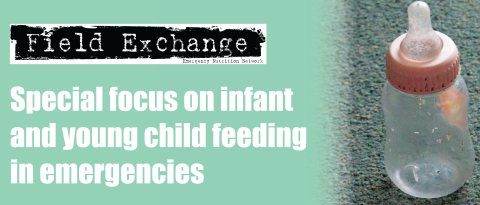Impact of WHO Growth Standards on programme admissions in Niger
Summary of research1

Severely malnourished children managed in the MSF-run Centre de Récupération Nutritionnelle Intensive (CRENI) in Maradi, Niger
A recent study by Epicentre and Médecins Sans Frontières (MSF) set out to assess the implications of using the new WHO Child Growth Standards in a nutritional programme in Maradi, Niger. The study aimed to compare the WHO standards with the NCHS reference in terms of response to treatment, and also to assess their respective accuracies at admission (as well as that of Mid Upper Arm Circumference (MUAC)) in predicting risk of death.
Epicentre analysed data from children aged 6-59 months admitted to the MSF programme in Maradi, Niger in 2006. Outcome measures included weight gain, treatment duration, recovery, death, defaulting and need for inpatient care. Both weight-for-height in Z-score (WHZ) and as percentage of the median (WH%) were examined. The receiver operating characteristic (ROC) and area under curve (AUC) were estimated for WHZ, WH% and MUAC to predict the risk of death.
Results
In this particular programme, eight times more children would be classified as severely malnourished according to the criterion of WHZ <-3 from the WHO standard, compared with the criterion of WH% <70% of the median from the NCHS reference. No child included on the basis of the NCHS reference was excluded when using the new WHO standards. Children admitted on the basis of the new WHO standards (WHZ) had shorter treatment durations, greater recovery and less death, less defaulting and less need for inpatient care than those admitted on the basis of the NCHS reference (WH%). Children admitted on the basis of the WHO standards were younger and admitted on higher WHZ scores. however these patterns still prevailed after adjustment for differences in age and sex. AUC values for the WHO standard provided higher accuracy with respect to predicting mortality (WHZ: 0.76 (95% CI, 0.75-0.80) and WH%: 0.77 [0.75- 0.80]) than the NCHS references (WHZ: 0.63 (0.60-0.66) and WH%: 0.71 (0.68-0.74)). The relationship between MUAC and mortality risk appeared weaker, with the AUC: 0.63 (0.60-0.67). Analysis stratified by sex and age yielded similar results.
Conclusions
The WHO standards and the Z-score criterion expand programmes to include children who are younger but less severely wasted. Identified at earlier stages, these children had fewer medical complications requiring inpatient care and were more likely to experience favourable discharge outcomes. However, use of the WHO standards results in a considerable increase in the number of children identified as severely malnourished when compared to the NCHS reference, with significant implications for the size of treatment programmes and resources needed. Although increased resources may be needed, they may likely be balanced by the lower duration of stay and needs for inpatient care.
1Lapidus. N et al (2008). Introduction of the WHO growth standards: impact on a nutritional programme in Maradi, Niger. MSF Scientific Day Report. 'Research shaping the way we work'. 5th June 2008. http://www.msf.org.uk/scientificday.event
Imported from FEX website


